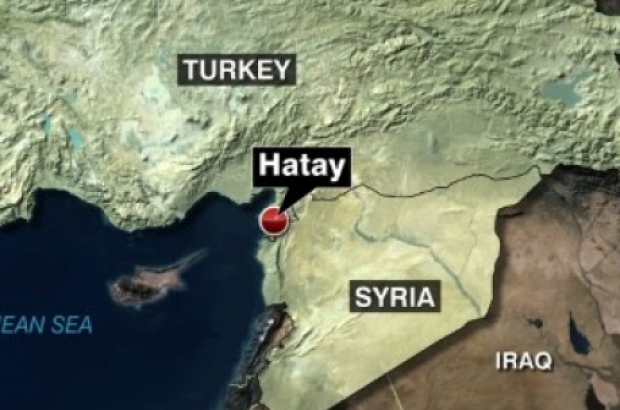- Daily & Weekly newsletters
- Buy & download The Bulletin
- Comment on our articles
Russian plane shooting: Belgian mathematicians say both sides are wrong
Two scientists from the University of Leuven (KU Leuven) have presented evidence that neither side is telling the whole truth in the case of the Russian fighter plane shot down by Turkish forces last week on the Turkey-Syria border. Tom Van Doorsselaere and Giovanni Lapenta, both mathematics professors, published their conclusions on the university’s staff blog.
Turkey claimed that the Russian plane had been in its airspace for 17 seconds and had been warned several times before being downed. Russia said the plane was in Syrian airspace.
The video of the incident shows the jet falling for about 30 seconds after being hit. “Since vertical movement is solely dependent on gravity,” write the mathematicians, “We calculate that the plane was at a height of at least 4,500 metres. The Turkish air force claims 5,800m, which is compatible with our estimate.”
The pair also calculated the speed at which the plane was travelling and the distance it fell. Together with the crash location, less than two kilometres inside the Turkish border, they concluded that the plane was in Turkish airspace for 7.5 seconds rather than 17 seconds.
Turkey also said that it warned the Russian pilot 10 times in five minutes that he was approaching Turkish airspace. According to the mathematicians, a plane travelling at 960km/h, as they calculate, would cover a distance of 80 kilometres in five minutes. “How could the Turkish air force predict that the Russian jet would enter Turkish airspace?” the scientists ask. “The warnings to the pilot were no more than speculative when they were given.”
But Russia is also not accurate in its claims, they said. The map distributed to show what happened has the plane making a sharp 90-degree turn after being hit. “Scientifically, that is nonsense,” they wrote. “A course change of 90 degrees could only be caused by an object many times heavier or faster than the jet.”
It is clear, they concluded, that neither story is perfectly accurate. “The breach of Turkish airspace lasted at most 10 seconds. And Russia’s claim that the jets avoided Turkish airspace does not correspond to the laws of mechanics.”









